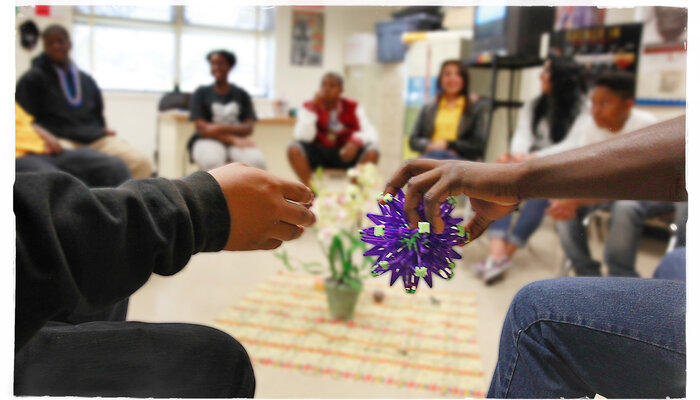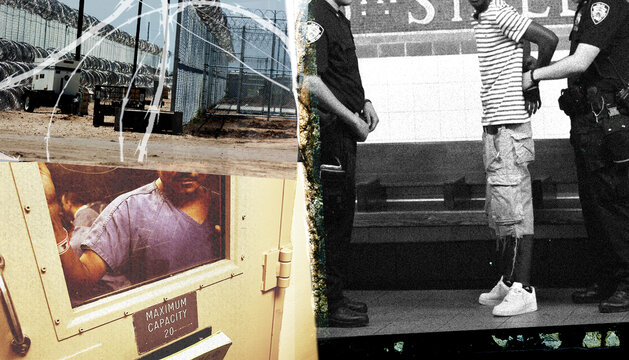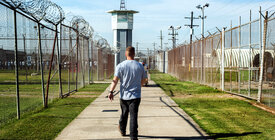
There Is No One Answer to Over-Policing and Mass Incarceration — There Are Many
Examples abound for successful alternative methods that can greatly improve the current criminal legal system.

Part of
This essay is part of the Brennan Center’s series examining the punitive excess that has come to define America’s criminal legal system.
America is a carceral society. We relegate more than 6 million people to some form of correctional control, 2.1 million of them behind bars. We confine people to correctional facilities plagued with inhumane conditions. We rely on criminal punishment to respond to basic human needs and solve social issues, like homelessness and drug addiction. We penalize people even after they’ve served their sentence by permitting limitations on their civil liberties and saddling them with unbearable debt, two burdens that prevent individuals with criminal records from holding full-fledged membership in our polity. And we disproportionately punish our society’s most disempowered members, the largest share of whom are descendants of the enslaved.
There is obviously no easy solution to a problem so complex, so deeply ingrained in the American experience. But some jurisdictions have already taken steps toward reimagining and unwinding our legal system’s reliance on punitive excess by developing hyper-local, community-led systems of accountability, public safety, and financial and political empowerment. Each of these provides a model, or at the very least a test case, of meaningful reform.
In an effort to divert people from the criminal legal system, New York City introduced plans to transfer control of its school-safety program from the police to the city’s Department of Education and relieved the police from responsibilities as inappropriate as serving as crossing guards and as important as performing outreach services for unhoused people. Both activities will be reassigned to civilian agencies.
In Shreveport, Louisiana, after 23 students were arrested at Southwood High School for fighting, families responded by forming a group called Dads on Duty. The dads take shifts “greeting students in the morning and helping maintain a positive environment for learning.” Since the initiative launched this September, the school has not experienced a single incident. This shift embodies a welcome break from how things had been: according to the school’s principal, Dr. Kim H. Pendleton, troublesome violence had beset the institution at the start of the academic year.
More than 25 other cities have addressed the school-to-prison pipeline by removing police from their schools. Berkeley, California, and Brooklyn Center, Minnesota, have also overhauled police involvement in traffic enforcement. Berkeley’s city council has proposed establishing a new Department of Transportation (dubbed “BerkDOT”) that would task unarmed civilians with low-level traffic enforcement.
Several cities have redirected funding to address the root causes of crime, including housing and job insecurity. Austin’s city council voted to use diverted funds to transform two hotels into permanent supportive housing units for individuals experiencing chronic homelessness, where residents will have access to case management services that include mental health and substance use counseling, workforce development programs, and job placement services.
In an effort to redress decades of inequitable resource distribution, both Los Angeles and San Francisco have reinvested police funds in youth programming, workforce training, and housing support for historically under-invested communities.
Other jurisdictions have begun to alter their emergency response systems to reduce police contact that disproportionately harms nonwhite residents. In Eugene, Oregon, the Crisis Assistance Helping Out on the Streets (CAHOOTS) program has redirected a function previously performed by the police by creating a program that sends two-person teams of crisis workers and medics to respond to 911 and non-emergency calls involving people suffering a mental health crisis. CAHOOTS is so successful that the organization has begun collaborating with at least nine other cities to develop similar non-policing models of response.
Along with these revised visions of community safety comes the work of draining our bloated network of prisons and jails. In St. Louis, an extensive organizing campaign succeeded this year in forcing the closure of the city’s infamous “Workhouse” jail. In Virginia, the RISE for Youth campaign brought about the permanent shutdown of 130-year-old Beaumont Youth Prison, enabling the reallocation of millions of dollars toward community-based programs for youth. Among other services, the state has provided evidence-based family therapy for court-involved youth in underserved communities. RISE for Youth was also successful in stopping the construction of a new youth prison in the city of Chesapeake. More recently, the Los Angeles County Board of Supervisors has begun to implement the long-promised closure of the Men’s Central Jail in downtown L.A., with plans to release, relocate into residential programs, or divert into community-based treatment thousands of incarcerated individuals.
Also approaching the issue from a different angle, groups such as New York City’s Common Justice, focus on reducing and addressing crime without relying on incarceration. The organization has developed successful alternative-to-incarceration programs that divert cases into a restorative justice process “designed to recognize the harm done, honor the needs and interests of those harmed, and develop appropriate responses to hold the responsible party accountable.”
The concept of restorative justice is a proven method of tackling culpability that works to avoid a reliance on imprisonment. But even aside from scientific analysis of its merits, it is qualitatively clear that restorative justice transforms relationships and communities by offering a different approach to redress than the often traumatizing and ineffective criminal legal system. It provides crime victims with the opportunity to engage directly with those who have harmed them while still fostering accountability for those who caused the harm.
Many of the guiding principles of restorative justice can be traced to indigenous practices, such as peacemaking and talking circles used to resolve conflict and injury in Native American and First Nation Canadian cultures. However, the contemporary exercise of restorative justice in criminal legal settings comes from a Canadian experiment that began in 1974 and has provided nearly half a century of knowledge that can be used to refine best practices.
Its popularity has grown in recent years, and today restorative justice is established as a valuable mechanism to address the needs of victims and their communities while promoting accountability and the cessation of destructive actions. Some version of the practice now exists in nearly all 50 states. In San Francisco, District Attorney Chesa Boudin has put forth a vision for a dramatic expansion of the restorative justice model, promising to make the option of restorative justice available to victims of all crime.
All told, a wide body of evidence illustrates the growing number of solutions to our nation’s reliance on incarceration and policing. To operate at scale, these practices require both government investment and commitment from the public to supplement existing grassroots networks.
No single one of these changes is perfect — in fact, they fail even collectively to create a completely new vision for justice in America. We know these systemic adjustments, even if jurisdictions everywhere implement them, won’t entirely transform our society into one that no longer harms our most marginalized groups.
Yet our nation’s most radical changes — ending slavery, mandating racial integration of public facilities, rooting out racial voter suppression tactics such as literacy tests and poll taxes — arose from incremental steps toward visionary goals. We have to start somewhere. Perhaps the best way to do so is to acknowledge the people and places already improving their communities and adopting their successful methods everywhere we can.
More from the Punitive Excess series
-
How Some European Prisons Are Based on Dignity Instead of Dehumanization
Prisons in Northern Europe are actually supportive, and they see lower rates of violence and recidivism. -
Countering Excessive Punishment with Chances for Redemption
A personal story shows the full costs of an unfair system and demonstrates how it can be improved. -
Beyond the Era of Punitive Excess
Reckoning with our overreliance on excessive punishment requires a commitment to truth-telling.





